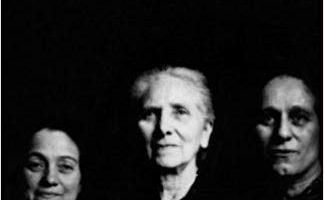Rhythmic Border Crossings: Natacha & Sapho
Calling herself “a human Gaza Strip,” performer Natacha Atlas captures the essence of her ethnic background and her cultural influences. Raised in a Moroccan suburb of Brussels, child of a Sephardic Jewish father and Muslim mother, Atlas learned Middle Eastern techniques of singing and dancing. She learned to be acutely sensitive to interracial tensions, but today is inspired by the role that a singer of mixed origins can take in bridging differences.
Finding a place in the British club scene, Atlas fused her Middle Eastern vocals with Western pop in her work in the group Transglobal Underground and on her first solo album, “Diaspora” (MCA). However, Atlas, who is practiced in raq sharki (belly dancing), longed to further explore the Arabic musical legacy. She draws compellingly on Moroccan, Egyptian and pop music traditions in her new album “Halim” (Beggars Banquet U.S.), which means “beautiful.”
Sapho, a French-Jewish singer with Moroccan roots, defies cultural and political boundaries. Sapho proved this earlier in the year, singing for more than 1,000 Palestinians in Gaza City. Sending a powerful message about the political and territorial exclusion of the Palestinians, Sapho performed in Israel only on the condition that she could first do the show in Gaza. Sapho told The New York Times, “I did not want to be rude to the other half of the Israeli community who were against the trends of the current Government in Israel.”
The title of Sapho’s newest album, “Digital Sheika” (Barraka El Farnatshi Productions, Basel, Switzerland), goes straight to the heart of her Moroccan experiences. The sheikha, a wild, gyrating “woman of ill repute,” is both admired and reviled for her disregard for society’s limits. Like the sheikha, Sapho goes to the margins and pushes the boundaries.


